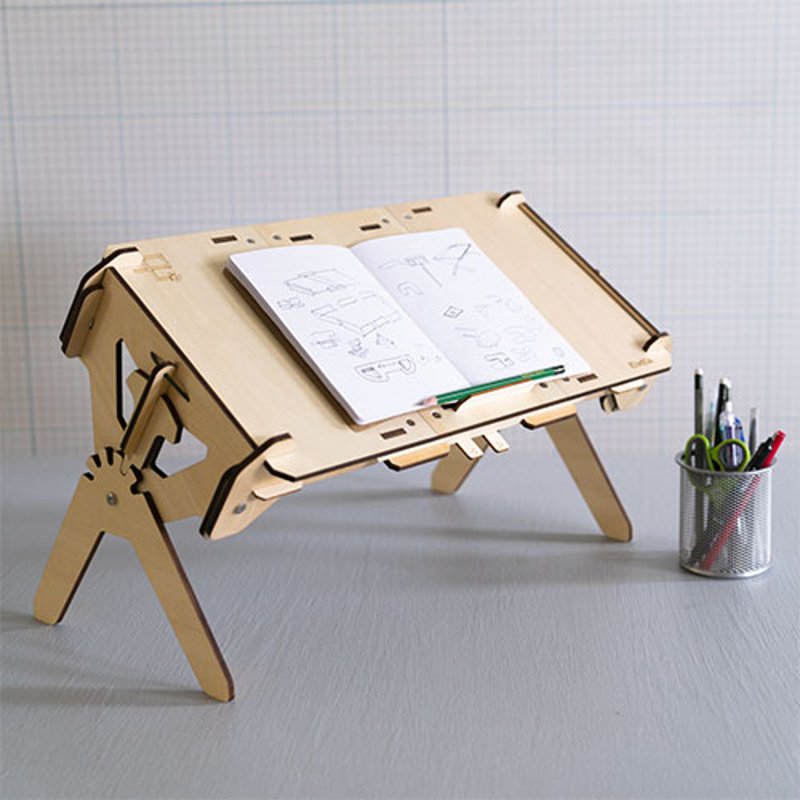Tilt-and-fold Desk
In this Eureka Crate, you'll explore the science, engineering, and history behind adjustable desks while building one of your own!

Explore:
- Interlocking Assembly
- History of Writing Desks
- Science of Bungee Cords
Behind the design
Peek into the KiwiCo product design studio and the design process behind the Eureka Crate Tilt-and-Fold Desk.
- The built-in drawers on these early prototypes definitely added a fun functionality, but they didn't do much for structural support. Just writing on these prototypes was enough to make them bend and creak. As we figured out how to make the desk design more rigid, we ended up replacing the sliding drawers with solid cross beams. (But if you want, there's still space underneath to add your own secret compartments!)
Beam On
- To make the desk stronger, we had to iterate the design of the support beams. The early prototype in the middle has hardly any support, so if you bend it, it flexes about a quarter of an inch up and down. But check out the support pieces on the later designs on the left and right — the thick wood slats work just like the criss-crossing wood grain in plywood to keep the desk flat and solid.
Extra Support
- A few of our designs had four adjustable legs instead of the two we landed on for the final design. We thought four legs would give users more flexibility to configure the desk, but when we tested them out, they ended up being too complex, and our testers couldn't actually get the legs where they wanted them. By simplifying from these spring-powered designs, we lost a bit of configurability, but we gained a ton in user satisfaction with how easy the final legs are to adjust.
Less Is More
